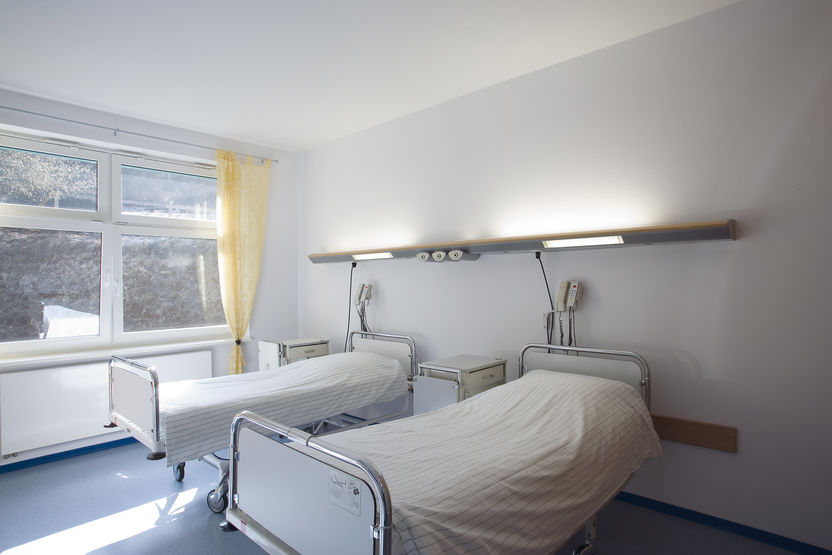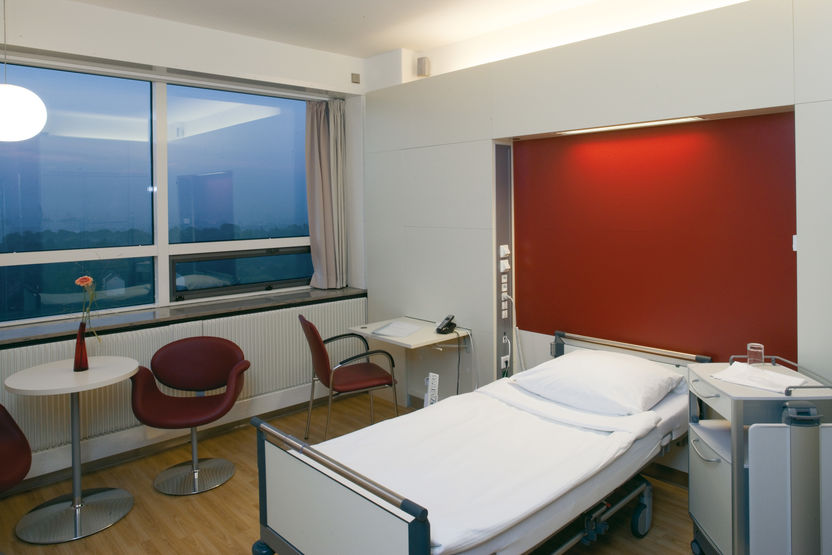


Figure 3.117: Ward room equipped for regular care (left) and elective care (right).
Lighting in ward rooms serves to support patients’ well-being but also to facilitate examinations (e.g. during rounds) or treatment (e.g. injections or radiotherapy). These requirements can only be fulfilled by suitably multi-functional lighting.
The function of a ward can become obvious by the equipment that is present. Normal and elective care rooms are distinct - the medical care, however, is the same. Elective care rooms usually feature refrigerators, safes, patient terminals and bedside Internet access as well as more room for personal belongings and visitors. Comfortable, bright and colourful rooms help forget about the rather dull days spent inside the hospital. Well designed lighting and supply systems also contribute to improved market opportunities for service providers.
General lighting serves to create a comfortable atmosphere and should suffice for simple tasks. The light-emitting surfaces of a luminaire which can be perceived by patients in bed must be limited to an average luminance of 1.000 cd/m². The luminance of the ceiling must not exceed 500 cd/m² at any point. Due to these specifications, general lighting is mostly executed as indirect lighting, which is often built in as part of electrical and medical supply units.
In ward rooms for infants, double the illuminance is required due to intensive care and monitoring work by personnel. The required light colour is warm white. Where ward rooms also serve for infant monitoring, a neutral white light colour is recommended, e.g. to facilitate recognition of skin discolouration due to disordered bilirubin levels (q.v. chapter "Light and non-visual effects").
In general wards each bed space must be equipped with reading lighting. In DIN 5035-3, the reading area (visual task area) is assumed to be an area of 900 mm width and 300 mm height which is inclined by 75° from the horizontal. The centre of this area is located 1.100 mm above the floor and 800 mm away from the head end of the bed. If the distance between head end and wall is unknown, it is assumed to be 200 mm (see figure).
For adjustable reading luminaires, it is sufficient if the reading lighting requirement can be fulfilled in any possible reading field of 300 mm · 300 mm within the reading area. LG2 defines a horizontal plane of 1.0 m² in the upper bed area at 1,0 m above the floor for the reading lighting, where illuminance must be 300 lx (see figure).
To avoid glare in shared rooms, average luminance for reading luminaires in the direct field of vision of other patients must not exceed 1.000 cd/m² according to DIN 5035-3. The direct field of vision is formed by the totality of all points which can be fixated through head and eye movements while the body is reclined horizontally on the back.
In Great Britain, larger wards and beds located opposite each other are very common. Therefore, LG2 contains strict conditions for glare limitation in luminaires which can be arranged between the opposite rows of beds as ceiling luminaires for general lighting purposes. For surface-mounted ceiling luminaires, the maximum permissible average luminance from the point of view of patients lying in bed is 1.500 cd/m², for recessed luminaires it is 1.000 cd/m².
For wall-fixture lighting systems, shielding conditions are depicted in figure: To avoid direct glare in luminaire systems, the illuminance portion in the distribution range between 75° and 90° must be limited to 5% of the lower luminaire luminous flux. Similarly, the luminous flux portion in the distribution range between 90° and 120° must be limited to 5% of the upper luminaire luminous flux. To avoid glare caused by excessively bright wall components, the same restrictions apply to distribution ranges between 0° and 5° as well as 175° and 180° (figure a). Correspondingly, average luminance for wall-fixture lighting systems in an angle range from α to β (see figure b) must be limited to 700 cd/m². The angle α, according to figure b results from construction drawings, and the angle β is 120° at a lighting system mounting height h3 < 1,8 m and 90° for h3 between 1,8 m and 2,0 m. For h3 > 2,0 m, β must be determined according to figure b.
For general examinations or treatments performed at the patient’s bed, the maintained illuminance of 300 lx stipulated by DIN 5035-3 is based on the longitudinal axis of the examination plane at 0,85 m above the floor (also applies to variable bed heights, see figure). Examination lighting illuminance can be composed by all lighting components in the room. Uniformity Emin/Ē for this lighting must not undercut 1:2. The lighting must be glare-free for treatment personnel, but due to the short exposure terms does not have to be glare-free for patients. According to EN 12464-1, the maintained illuminance of 300 lx applies to the visual task area. Uniformity must be 0,60. For examinations or treatments with higher lighting requirements, maintained illuminance can also be achieved by additional, portable examination luminaires according to EN 60601-2-41 "Medical electrical equipment – Part 2-41: Particular requirements for basic safety and essential performance of surgical luminaires and luminaires for diagnosis". In accordance with LG2, for examinations by treatment personnel an average illuminance of 300 lx with a uniformity of at least 0.5 should exist on the bed's surface at a height of 1.0 m above the floor.
Night/observation lighting serves to enable care personnel to move around the patient room at night and to monitor the patients where necessary. To prevent the observation lighting from causing glare to patients, luminaires with indirect distribution onto ceiling or walls should be used. In childrens wards, higher illuminance is recommended. According to LG2, observation lighting should have 1-5 lx at night and 15-20 lx for observation in the upper bed area.
Orientation lighting serves to facilitate orientation in the room during the night without causing disturbance to sleeping patients. Luminaires should be installed below bed level and in the door area. Wide distribution in the lower half of the luminaire should be the objective. Orientation lighting must be switchable independent of the remaining lighting. According to LG2, night lighting is composed of ceiling luminaires for which two values are defined: Maximum 0,5 lx in the pillow area, and 5 lx at 0,85 m above the floor for opposite beds, maximum value 10 lx.